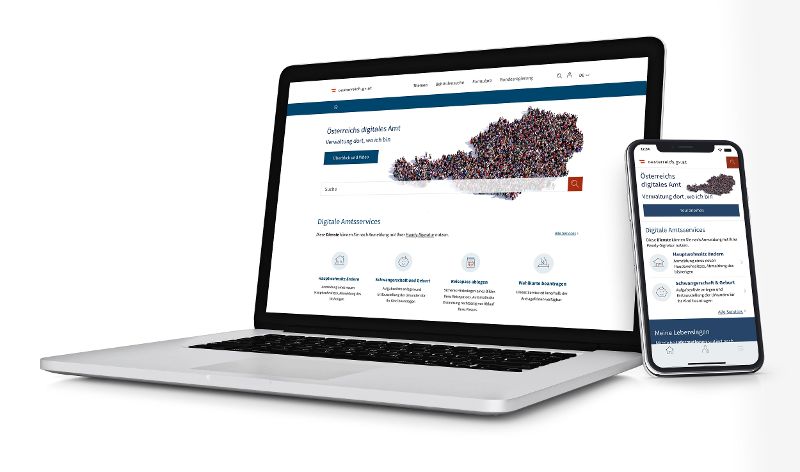ADMINISTRATIVE AGENCIES

The public administration service is an important driver of digitalisation. It is important to involve all stakeholders in the process, ensure the transfer of expertise between regional authorities and follow a common strategy at all levels of public administration.
Digital evolution is a subject that affects all departments. In order to coordinate aspects of innovation and digitalisation between the ministries, a Chief Digital Officer (CDO) has been appointed for each department. They make up a committee called the CDO Task Force, and their role is to improve the coordination of digitalisation measures between different ministries.
From e-government to m-government
Digitalisation is reaching all areas of our lives and the penetration rate of smartphones in Austria is relatively high. So a logical consequence of this is to make as many e-government services as possible available for mobile end devices. With the Digitales Amt (Digital Office) app, most digital official services can be used with an electronic identity (ID Austria).
Digital public administration
Digital public administration or e-government entails simplifying information, communication and transactional work flows and processes within and between state institutions, and between the administrative agencies and citizens or businesses, by using information and communication technologies.
More here: What does digital public administration mean?
The use of information and communication technologies (ICT), with the aim of increasing and improving the quality and efficiency of public administration services, is summed up under the general term e-government.
Digitales Amt (Digital Office)
The office of the future: oesterreich.gv.at/the Digitales Amt (Digital Office) app

Citizens can use the central online platform oesterreich.gv.at to find information at any time and wherever they are, on their desktops or mobile devices, and conduct their official transactions – 24 hours a day, 7 days a week, 365 days a year. More information here: Digitales Amt.
Open government
Open Government Data (OGD)
This is used as an umbrella term for a range of concepts and visions for how the state and public administration services could be opened up.
Open Government Data (OGD) describes those datasets which are not related to individuals and are not part of critical infrastructure and which can be made freely accessible in the interests of the general public, with no restrictions on their free use, distribution and reuse. Making them available in this way encourages the development of new products and services.
The launch of the Austrian one-stop Open Government Data metaportal data.gv.at in 2012 was an important step forward in successfully implementing open government data in Austria. data.gv.at constitutes a central catalogue for open data in Austria, so that users can find the data they need via a single online entry point. Thousands of datasets have been published in accordance with the principles of open government data. On 24 February 2020, the OffeneVergaben.at (public procurement) application became the 500th application available online at data.gv.at.
Approximately 1200 people access the website every day.
The principles of open government data
Open government data is believed to have the potential to encourage long-term social, cultural, scientific and economic progress in many areas.